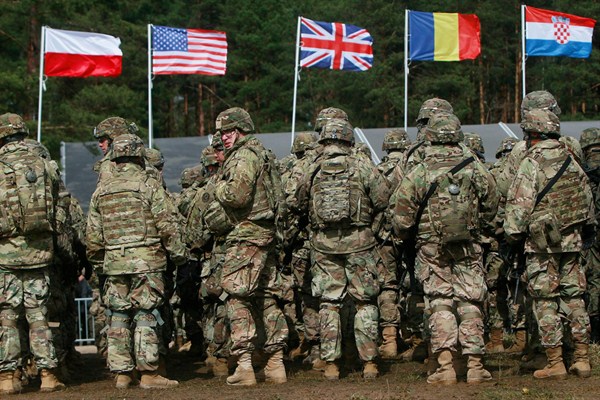Ever since Russia’s 2014 annexation of Crimea and military intervention in eastern Ukraine, NATO’s Eastern European member states have expressed mounting concern over their own security. Moscow still holds substantial political capital in the region and, as evinced by upcoming war games that will bring some 100,000 Russian troops to their borders in September, is willing to use its military capabilities to ratchet up tensions. WPR has compiled 10 articles analyzing the politics of Eastern European security in the face of renewed Russian adventurism.
Purchase this special report as a Kindle e-book.
The Political Battlefield
How to Deter Russia From Meddling in Democracies
To deter Russia’s meddling in their elections, Western democracies must alter the strategic calculus by raising the price that Moscow pays for its “gray zone” aggression, Steven Metz argued in May. The Kremlin has enjoyed some success in influencing politics in Eastern Europe and beyond, but democracies also have a wide array of nonmilitary tools at their disposal—if they can muster the will to use them.
The conviction that Crimea is legitimately Russian land—never again to be lost, bartered or leased—has become a catechism among the elite in Moscow since its annexation in 2014. As for the rest of Ukraine, Matthew Rojansky wrote in February, Russians see a mix of a grim but acceptable status quo and developments that may gradually break in their favor. Moscow has accordingly doubled down on a diplomatic war of attrition in its “near abroad.”
Twenty-five years since it emerged from Soviet rule, the Baltic state of Latvia continues to struggle in forging a national identity—a task made more complex by its sizeable and unintegrated Russian community. A member of both NATO and the European Union, Latvia’s position is illustrative of the Baltic states’ struggle with Russian influence more broadly. In January, Matthew Luxmoore explained how paranoia surrounding a potential attack by an increasingly assertive Moscow is now fueling Latvia’s divisive approach to its Russian-speaking population.
Economic disputes, trade restrictions and public tirades are not usually the stuff of strong, bilateral partnerships. But that’s the nature of relations these days between Russia and Belarus, as Belarusian President Alexander Lukashenko seeks to hedge against his country’s dependence on Moscow. Dan Peleschuk examined the stakes in March, concluding that Lukashenko has limited room to maneuver in reshaping ties with his much stronger patron to the east.
The perceived threat represented by millions of immigrants from the western Balkans and Turkey, and the status of Central Europeans living in the U.K., were touchstone issues in the Brexit referendum. But little attention was paid to the vast impact a U.K. exit from the EU will have on Central and Eastern European security, noted Andrew MacDowall last June. No country in the region stands to gain more from European disunion than Russia.
The NATO Response
When Putin launched his campaign to prevent Ukraine from drawing closer to the EU in 2014, his objectives went beyond that country’s borders. Moscow’s moves were also meant as a signal to other countries in Eastern Europe that it might be time to reconsider their alignment with the West. Frida Ghitis examined last May how that strategy went wrong, instead provoking those same countries to double down on their commitment to NATO.
Last summer’s NATO summit in Warsaw produced an agreement to deploy four battalion-sized battle groups to Poland and the Baltic States. The decision to send more troops was important both symbolically and diplomatically, wrote Andrew Macdowall at the time. While not enough to hold off a full-scale Russian invasion, the multinational regiments create a tripwire for alliance involvement in the event of an attack.
Poland’s government gave a warm welcome in April to a U.S.-led NATO battalion, part of the series of deployments to create a tripwire deterrent to Russian aggression. In an email interview at the time, Marek Madej described Warsaw’s most pressing security threats, how it hopes NATO will help counter them, and how it has become a de-facto leader for the new members on the alliance’s eastern frontier.
The Baltic countries have historically viewed NATO through the prism of their relations with the United States, commented Andris Banka in May. It is a clearly asymmetrical partnership where the U.S. formulates its foreign policy and the Baltic states adjust. But U.S.-Baltic ties have entered a period of ambivalence under President Donald Trump: How do you manage relations with your most important ally when its leader questions the value of that alliance?
In an effort to ease concerns over Russia in Eastern and Central Europe, U.S. Vice President Mike Pence embarked this week on what could be called a “Trust us” tour of the region. Frida Ghitis argued last Thursday that the biggest obstacle facing Pence in reassuring those nations of U.S. backing is his boss’s own erratic stance on NATO.

